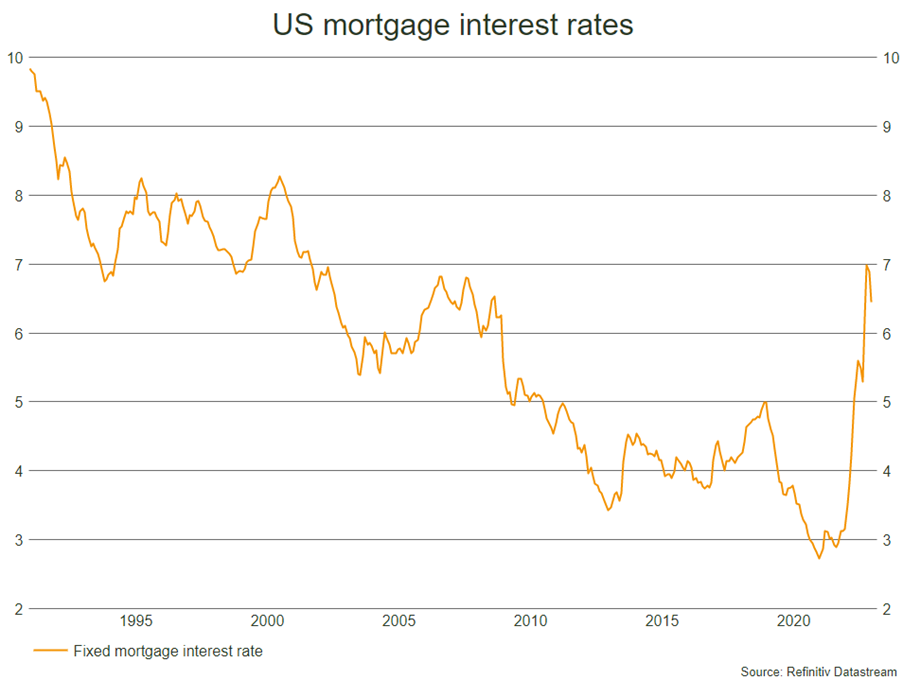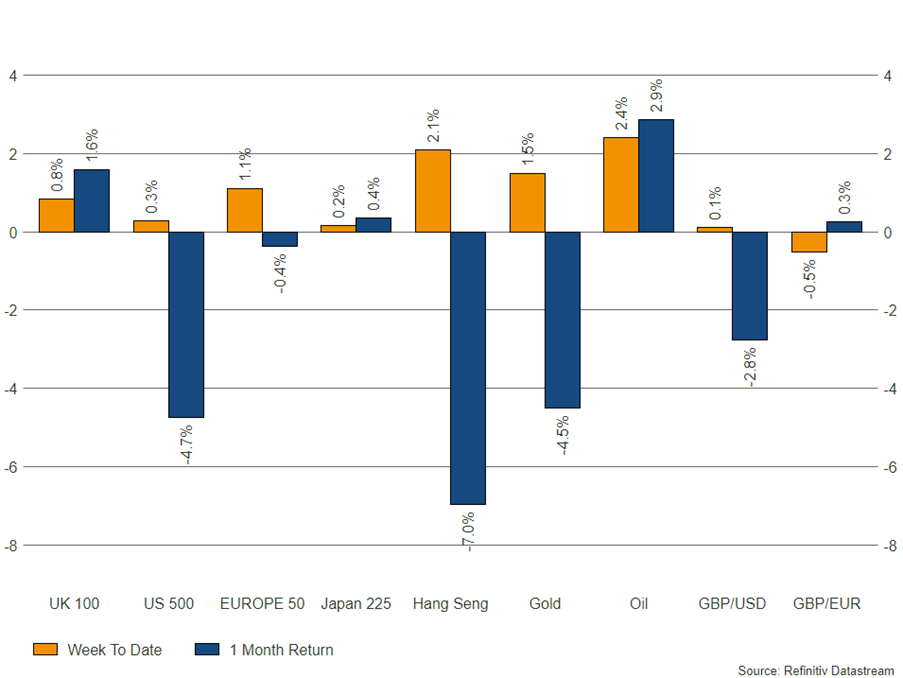As spring comes along the housing market tends to come to life. The correlation between the property market, inflationary trends and interest rates are such that it can give an indication whether or not the Federal Reserve (Fed) has tempered inflation by lifting rates, without destroying growth. As real estate is one of the largest sectors in the US, its property market can give us signs as to where the world’s largest economy is heading.
Mortgage rates
In October 2022, the rate on a 30-year fixed rate mortgage in the US breached 7.0%; the highest in two decades, currently sitting at around 6.5%. According to a large real estate brokerage firm, a US homebuyer with a $2,500 monthly budget can afford a $384,000 home today. That same buyer would have had budget for a $518,000 home back in 2021 when rates were at 3.0%.

Source: Refinitv
Given the situation, buyer demand is lower, and the market has slowed. Sellers can therefore either wait it out, pull their home off the market or lower their asking prices. The average price of a new home sold in the US is down 16% from its peak last year. By comparison, house prices fell by 25% during the financial crisis of 2008. Mortgage applications in the US have also now fallen to their lowest point since 1995.
Green shoots?
However, signs of an early rebound have emerged, implying that higher interest rates may not have had as negative an impact as expected. Confidence surveys are showing that homebuyers and homebuilders are more positive about the market and real estate firms are reporting more people are visiting new homes. But why are we seeing a pickup in demand when mortgage payments have reached 30% of average household income in America, double when compared to 2010?
A tight labour market is supporting relatively high wage growth. Rising incomes, falling mortgage rates and the recent decline in house prices may be helping to bring affordability back to swathes of the population and boost activity in the property market.
Bowmore portfolios
We are not currently directly exposed to US real estate in our portfolios, and do not hold any allocation to residential property. We think the Fed is watching the sector closely for signs of health within the wider economy, which in turn provides some guidance for interest rate policy.
The recent improvement in activity within the housing market may prove to be nothing more than the optimism that warmer weather and lighter evenings bring. Either way, we are monitoring the situation closely as one of many economic markers. If things deteriorate further, and additional recessionary pressures build, we must remain nimble enough to reposition portfolios accordingly. However, a US consumer in improving health is no bad thing for global markets.
Source: Refinitiv – Market returns as at 02/03/2023

